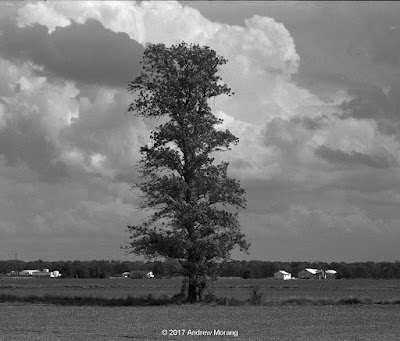Background
The 135mm focal length was popular through much of the 20th century. Leica and Zeiss sold 135mm lenses starting in the 1930s. During the single-lens-reflex boom of the 1960s and 1970s, all the Japanese companies made 135 lenses for their respective cameras. Often, that was the second lens a budding photographer bought, until the marketers convinced amateurs that they "needed" the off-brand 80-210mm zoom lenses (i.e., more profit margin for camera stores).
 |
| Honeywell Pentax advertisement, Modern Photography, June 1968. |
Asahi Pentax screw-mount Cameras1 | ||
Model2 | Date | Features |
Original | 1957 | Modern appearance, right side wind lever, instant return mirror. ≈ $199 with 55 mm f/2.2. |
S | 1957 | Contemporary geometric sequence of shutter speeds. 9 lensesavailable. |
K | 1958 | Semi-automatic diaphragm |
Asahi S3 (identical to Honeywell H3) | 1960 | Fully automatic diaphragm. $199 with 55 f/1.8 lens. |
Honeywell H1 | 1961 | ≈ $150; 1/500 top speed. World's first clip-on CdS meter available ($32). |
Asahi S3v (Honeywell H3v) | 1963 - 1969 | Added self-timer and automatic frame counter. |
Asahi S1a (H1a) | 1963 - 1969 | Added auto frame counter. 14 lenses available. |
Spotmatic | 1964 - 1971 | Through-the-lens CdS meter. $299 with 50 f/1.4. Very popular! Most chrome, some black paint. Motorized model made in 1970 (uncommon). |
SL | 1969 | Same as Spotmatic but without CdS meter. |
Spotmatic 500 | 1971 | Lower cost, 1/500 top speed, supplied with 55 f/2.0. |
Spotmatic II | 1971 | Added accessory shoe; sold with multi-coated lenses with extra indexing levers. |
Spotmatic IIa | 1972 | Sensor for automatic Honeywell flash. |
ES | 1972 | First Pentax auto exposure camera with electronically-controlled shutter. |
Spotmatic F | 1974 | Finest manual Spotmatic; open-aperture metering, $375 with 55mm f/1.8. |
SP 1000 | 1974 | No self-timer |
ESII | 1974? | Improved reliability over ES. End of the era for screw-mount bodies. |
Notes: 1. Sources: “A History of Pentax” articles by W. L. Fadner in Shutterbug (1988) 2. U.S. cameras had the Honeywell name and logo on the prism. International models were labeled with the Asahi name and logo. Many servicemen brought Asahi models back from Vietnam. | ||
M42 thread mount
The 35mm ƒ/3.5 Super-Takumar or SMC Takumar is another under-appreciated gem. I tested my bargain 35 around town and at the Tomato Place.
Production
 |
| Advertisement from Cambridge Camera Exchange, Popular Photography, January 1981, p. 164. |
 |
| Advertisement from Cambridge Camera Exchange, Popular Photography, December 1985, p. 105. |
Coating
Despite the obvious benefits of a hood, most point-and-shoot cameras of the 1980s and 1990s did not have any way to attach a hood for two reasons: 1. Users had been told that multi-coating negated the need for a hood (wrong); 2. Casual users would not use them even if supplied (lazy or uncaring).
















